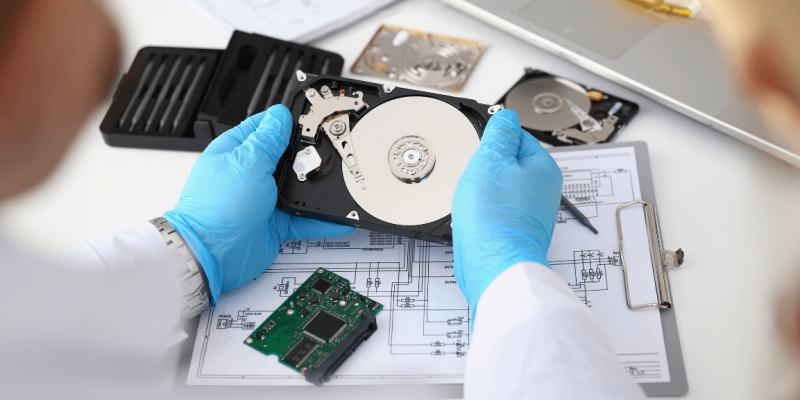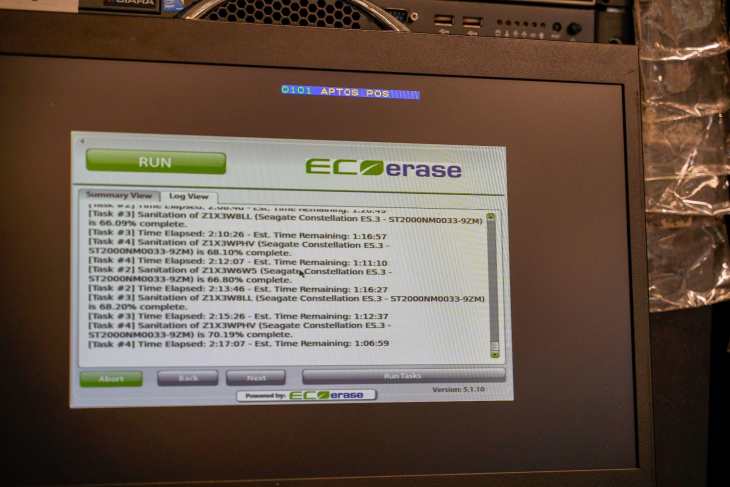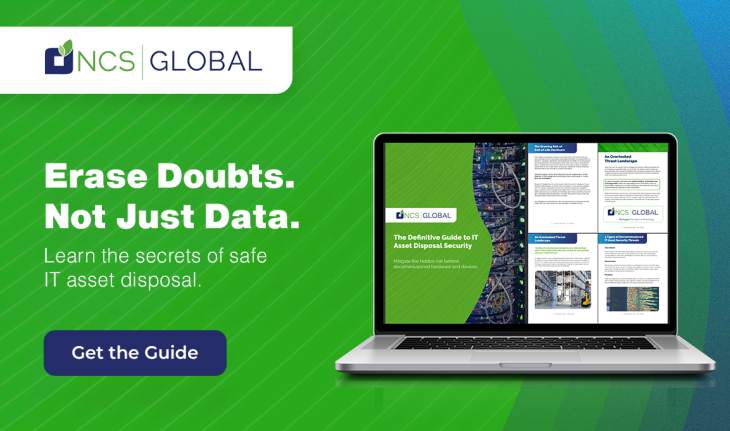Data Wiping vs. Degaussing: Choosing the Right Method for Secure Data Destruction

Secure data destruction is a critically important process in which sensitive information is permanently erased from hard drives, tape drives, or other storage media. This ensures that such data can never be recovered and misused by unauthorized parties. Whenever an organization disposes of old IT equipment such as servers, laptops, mobile phones, or even printers, it’s important that they include secure data destruction in their processes.
Two popular methods of secure data destruction are data wiping and degaussing. Data wiping involves overwriting existing data on a storage device with random or pre-defined patterns, making the original information irretrievable. Degaussing, on the other hand, uses strong magnetic fields to render the storage media unreadable. Both methods are effective in ensuring that sensitive data is permanently destroyed, but each has its own advantages and disadvantages, depending on the specific use case.

What is Data Wiping?
Data wiping is a secure process in which existing data is overwritten with random patterns of meaningless information. When you delete a file from your computer, the operating system does not actually remove the data from your hard drive. Instead, it simply notes that the sectors occupied by that file are available for use. Until that space is used to store some new piece of information, the original data remains intact.
Data wiping actually writes new data to the hard drive. Although this new data is effectively meaningless; its primary purpose is to overwrite any information left on the storage media. By overwriting the entire storage space multiple times, data wiping ensures that no traces of the original data can ever be reconstructed.
For many scenarios, it is sufficient to perform “single-pass wiping,” which overwrites the data once with a random pattern or zeros. For highly sensitive information, multi-pass wiping may be preferred. In this case, the data is overwritten multiple times (often following specific patterns outlined by standards such as DoD 5220.22-M). This is more appropriate for environments with highly valuable data, in which advanced recovery methods might potentially be used.
Data wiping is the preferred method in scenarios where a device will be reused, resold, or donated, because it securely removes all data without physically destroying the hardware.
What is Degaussing?
Degaussing uses a powerful magnetic field to disrupt or destroy the magnetic properties of a storage device, rendering any data stored on it unreadable. This process irreparably damages the storage device, though, making it unusable for storing data in the future.
Degaussing is effective for magnetic media such as hard drives and magnetic tapes, which store data using magnetic fields. It does not work on solid-state drives (SSDs), because these devices store data using electrical charges. Degaussing is also not suitable for optical media such as CDs and DVDs, which record data in laser-etched patterns.
Comparing Data Wiping and Degaussing
Data wiping and degaussing each have distinct advantages and disadvantages, depending on the specific use case. Let’s compare:
Effectiveness: Both data wiping and degaussing can securely erase data, but degaussing may not work with certain types of storage media. Data wiping is highly effective for solid-state drives (SSDs) and hard drives, especially if they contain the type of information that would not prompt bad actors to go to extremes to recover the data. For highly sensitive information, degaussing may be preferred because it offers absolute certainty that the data can never be retrieved.
Speed and Cost: Degaussing is typically faster than data wiping, erasing data in a matter of seconds. However, the equipment required for degaussing can be expensive and may only be practical for organizations handling large volumes of storage media. Data wiping, while more cost-effective due to its lower upfront costs, can be time-consuming, especially for larger drives, as it requires multiple overwrite passes to ensure complete erasure.
Reusability: One key advantage of data wiping is that it preserves the media for potential reuse or resale. Once wiped, storage devices like SSDs or hard drives can be repurposed, saving costs and contributing to greater sustainability. Degaussing, in contrast, renders the media permanently unusable by disrupting the magnetic structure.
Environmental Impact: Because data wiping allows for the reuse of storage media, it reduces e-waste. In contrast, degaussed media must be physically destroyed or discarded, contributing to landfill waste unless properly recycled. Data wiping is therefore a more environmentally friendly option.
When to Use Data Wiping
Data wiping is the best option when a device will be re-used, such as when an organization plans to redeploy the hardware internally or sell it. By securely wiping data, organizations can maintain the integrity and confidentiality of sensitive information while adhering to compliance standards and preventing data breaches.
In the financial services industry, data wiping is a common approach to secure data destruction. Needless to say, data security is a high priority for banks, credit unions, and insurance companies. Among financial businesses, data wiping is a widely accepted method of ensuring that sensitive information can never be retrieved by bad actors.
Data wiping is preferred by most corporate IT professionals as well. Data wiping has become an essential element of IT lifecycle management, especially when upgrading systems, disposing of outdated devices, or decommissioning data centers.

When to Use Degaussing
Degaussing is ideal for situations where data destruction must be immediate and irreversible, especially on magnetic media containing highly sensitive data. It is commonly used in industries with strict data destruction protocols, such as government agencies, military organizations, and healthcare institutions, where absolute data security is non-negotiable, and where hardware reuse is not a priority. In many cases, regulations mandate the use of degaussing as a method of data destruction, particularly when dealing with classified or confidential information.
Compliance and Regulatory Considerations
Both data wiping and degaussing are critical elements of regulatory compliance for data destruction. Organizations handling sensitive data must adhere to guidelines such as GDPR, HIPAA, and other industry-specific standards. Choosing the appropriate method based on these regulations may be critical in order to avoid potential penalties.
It’s also important to document the data destruction process by obtaining a Certificate of Destruction (CoD). This attests to the fact that appropriate processes were followed, and that data destruction was completed successfully. A CoD provides verification of the data destruction process for compliance purposes. Both data wiping and degaussing should be conducted in accordance with best practices that provide clear documentation for audit purposes.
Choosing the Right Method for Your Organization
Your selection of the right method depends on the type of media, the sensitivity of the data, your available budget, and the intended future use of the device. Data wiping is suitable for most scenarios, and has the added benefit of preserving the device for reuse. It’s also very cost-effective. Degaussing is ideal for magnetic media such as hard drives or tapes, where data sensitivity is extremely high, and the risk of recovery must be eliminated completely. This method is more expensive and destroys the media, making it unusable afterward.
A reputable IT Asset Disposition (ITAD) company can help you select a method for secure data destruction that aligns with your organization’s goals and compliance requirements. An ITAD provider can assess your specific needs, considering factors like industry regulations, environmental impact, and cost-effectiveness, to recommend the most suitable approach for your organization.
Conclusion
Data breaches and unauthorized access can have severe consequences, so today’s organizations must follow best practices for securing sensitive information. Secure data destruction is a vital component of the asset lifecycle management process. Data wiping and degaussing are two essential methods for achieving that. Together, they provide a robust defense against data theft and misuse. Erase Doubts. Not Just Data.
